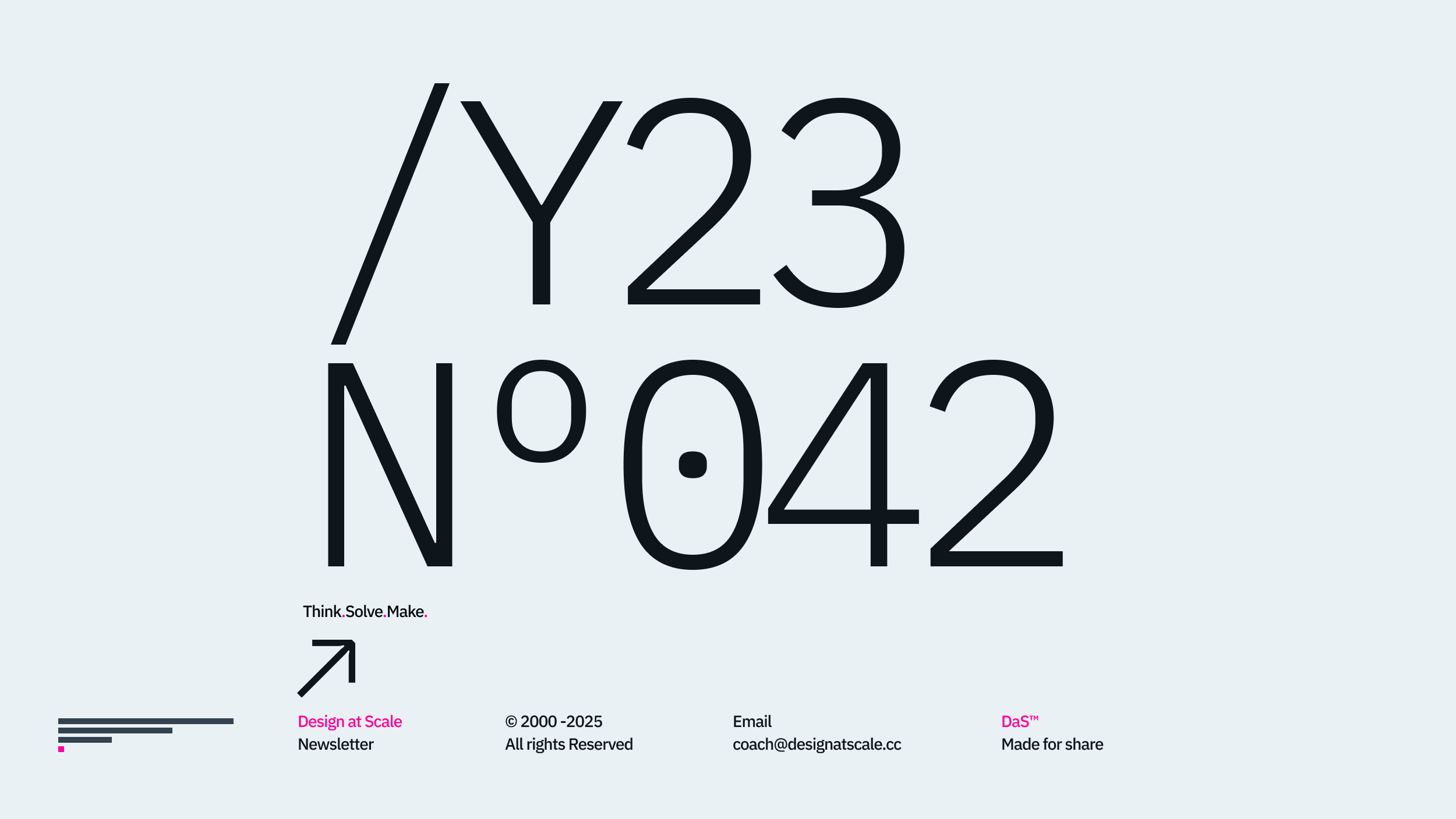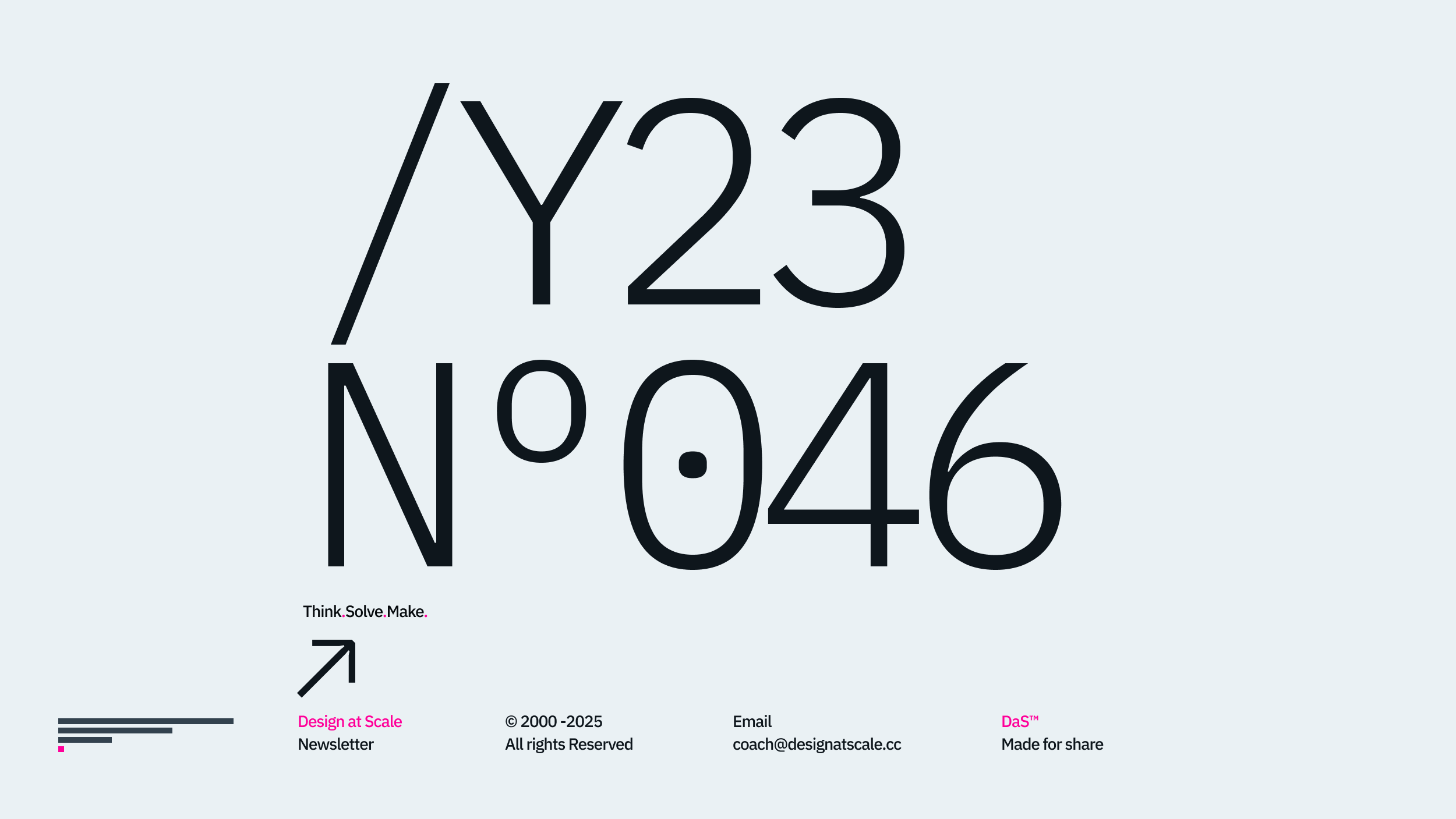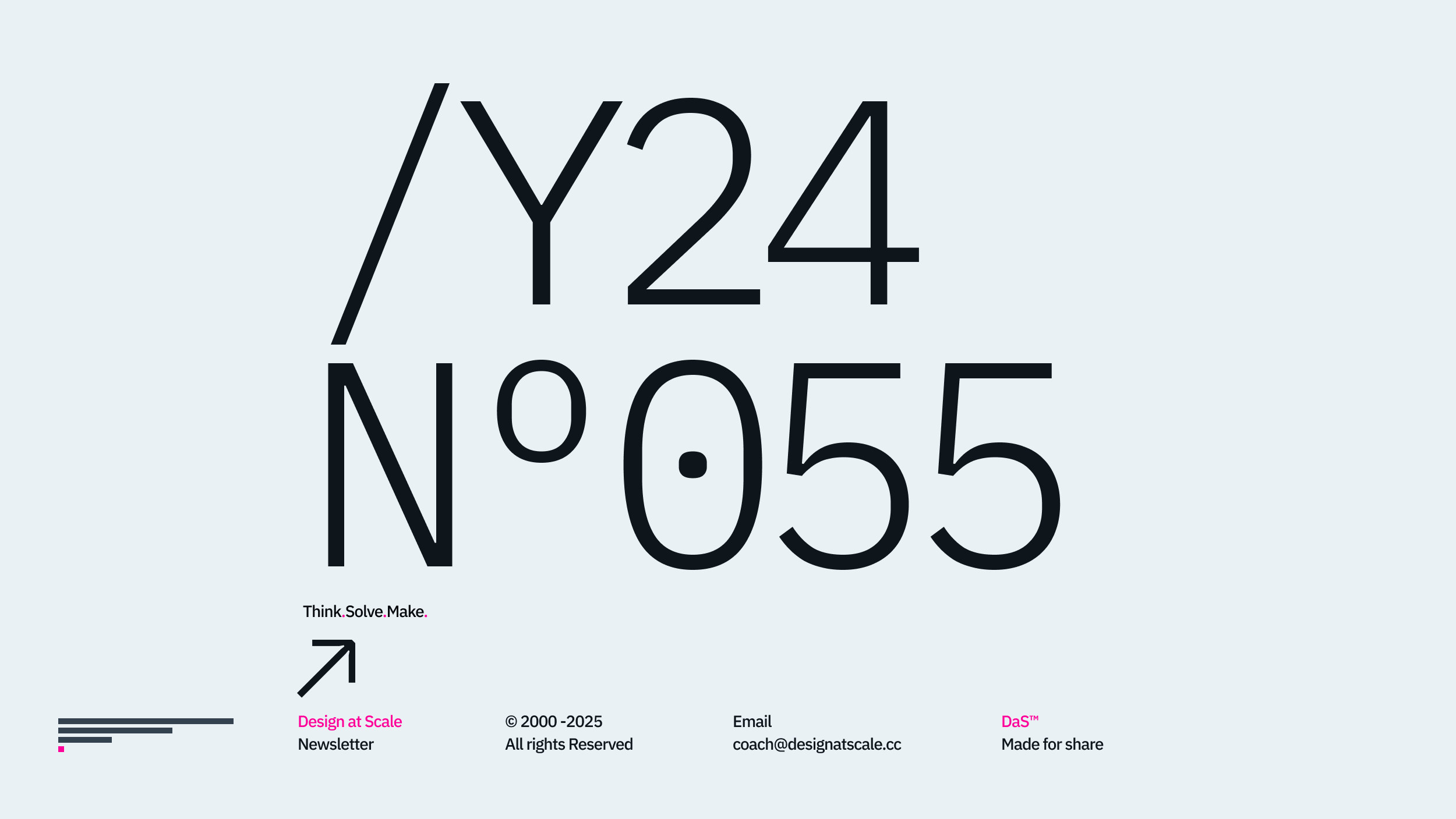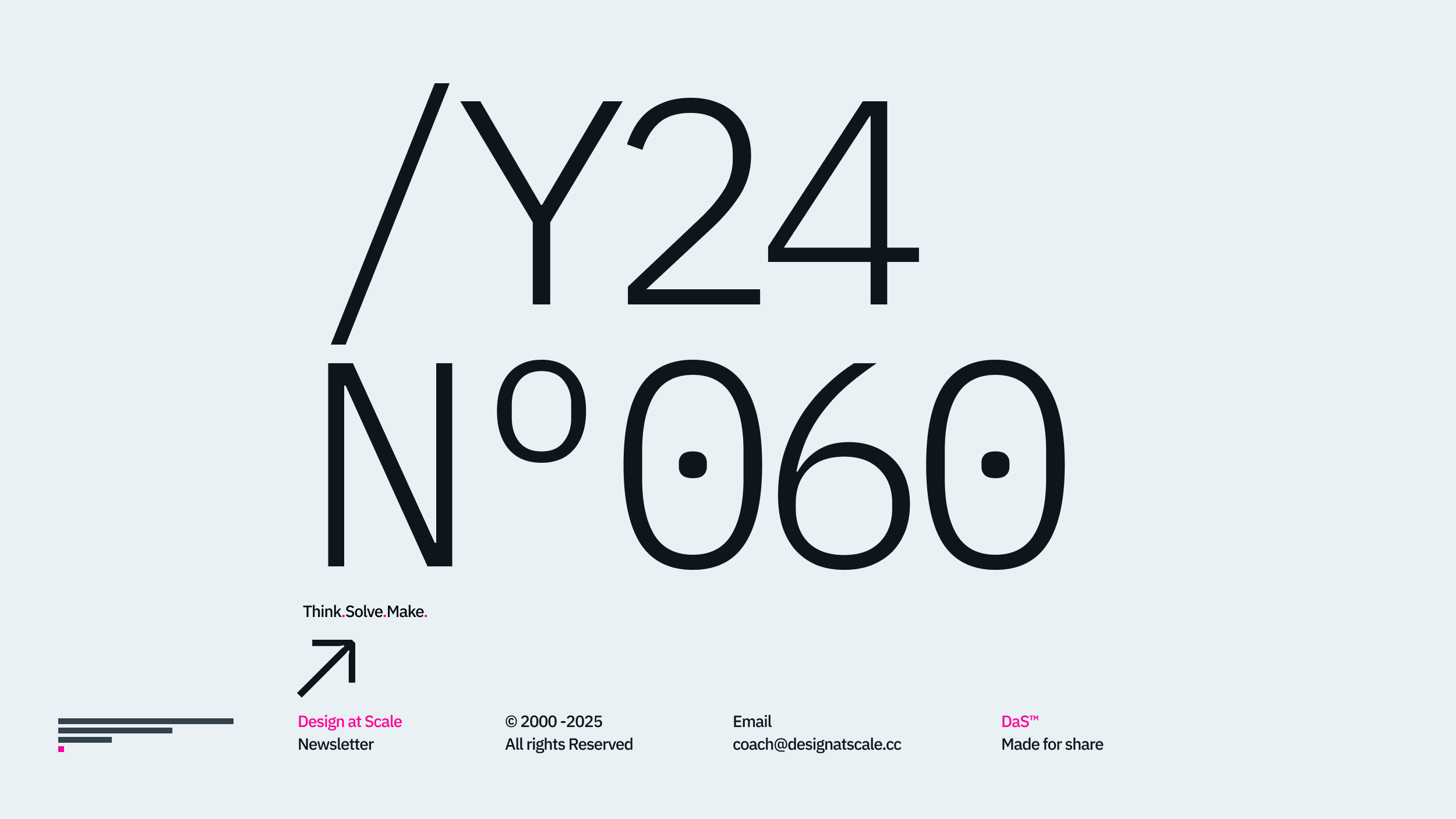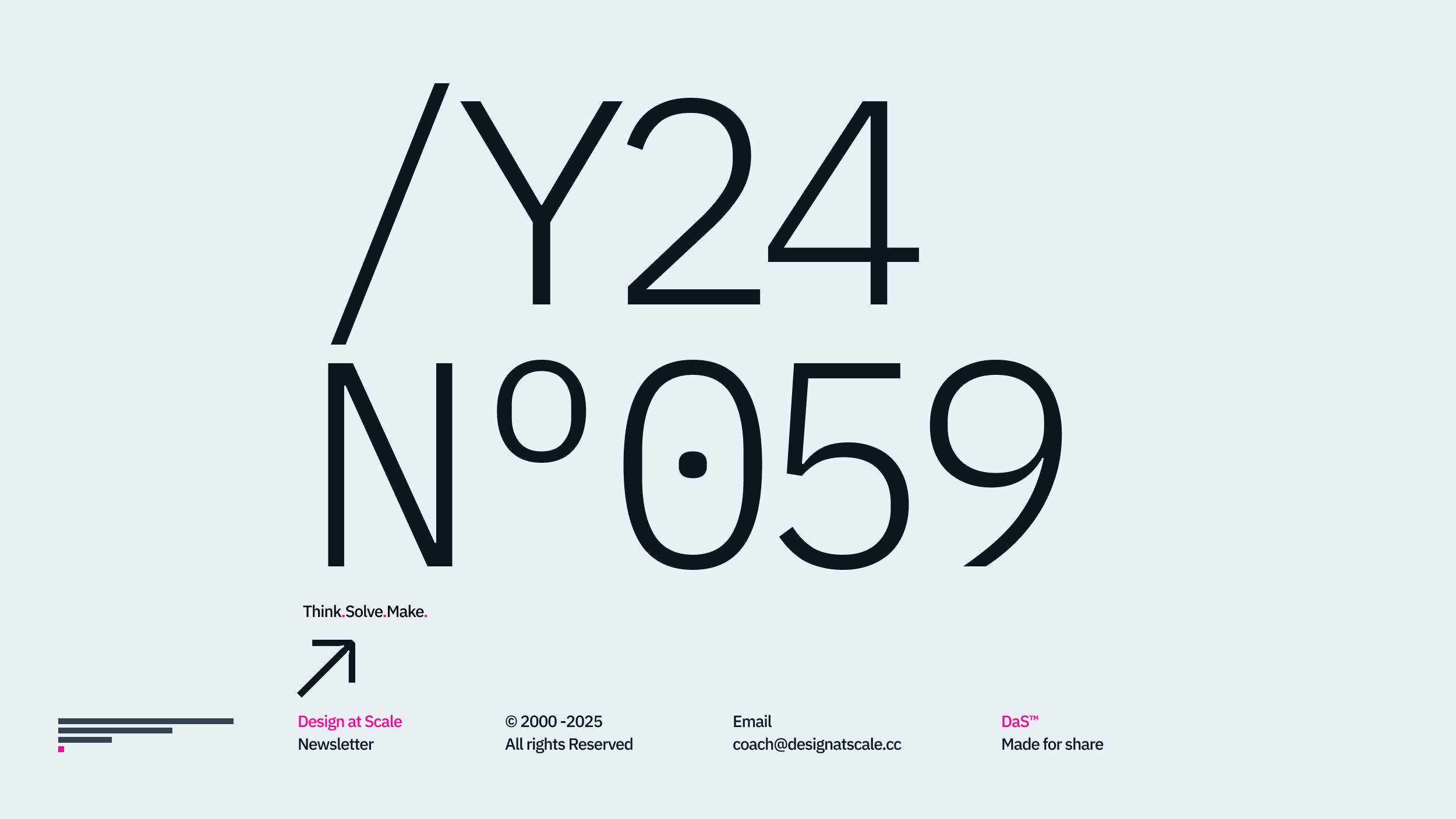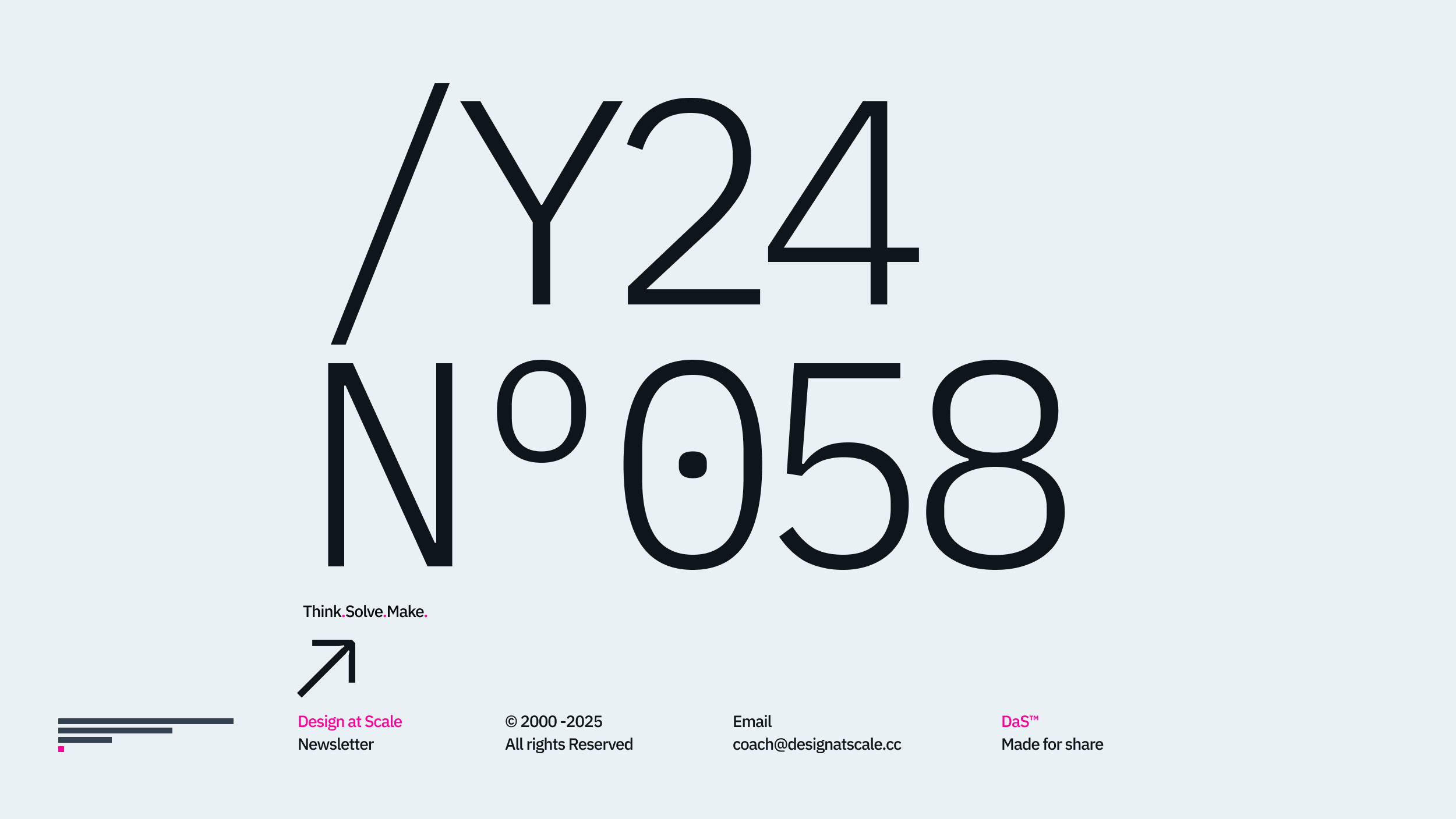The tech industry, and design within it, often perpetuates a comfortable myth that every designer needs a single, seasoned mentor to navigate their career in constant change.
That is why thousands of designers turn to design or other networks to discuss their industry challenges and to alleviate the pressure they face daily. What begins as a seemingly innocent opportunity to help someone can turn into an unprofessional and often very painful experience that leaves the mentee in despair or damages their professional reputation.
While forming the Design at Scale™, we have approached over 90 directors around the world to share their experiences on how they handle mentoring or coaching subordinate teams, and how they have built a great culture within their organisations.
Design at Scale™ Analysis has revealed that a significant number of approaches were too narrow and passive, limiting a designer's true growth potential. Instead of hunting for a mythical guru, Design at Scale™ emphasises a broader, more proactive strategy: cultivating a diverse, deeply structured knowledge base of mentors and advisors. This isn't about finding one person with all the answers, but rather identifying the problem and setting the foundation for addressing the situation holistically by embodying specific qualities of these leaders within the mentee itself, by contributing to the mentee's holistic development. And, as my colleagues rightly pointed out, it was not about a single mentor or source of truth; it was about the mentee's journey ahead.
What Makes a "Good" Design Mentor?
You do.
When considering individuals who can act as mentors, thinking beyond formal titles and solely design-centric expertise would be generally a good start. The most impactful "mentors" possess a blend of human qualities and specific attributes that foster genuine learning and growth. Preferably, the qualities of the mentor extend beyond personality – it is a combination of multiple factors and qualities that need to coexist to fulfil your specific objective (e.g., a complex client proposition, a difficult boss, or finding a job). Having a mentor offering empathy and emotional support to expand on the situation, who does not offer a foundation for action, is often the form of counselling, not mentoring. Equally, the mentor who ignores the problem guides you to do exercises that you do not need, while ignoring how you feel and how difficult some situations might be is not a good direction either. Here are some agreed-upon qualities of Design Director mentors you should consider.
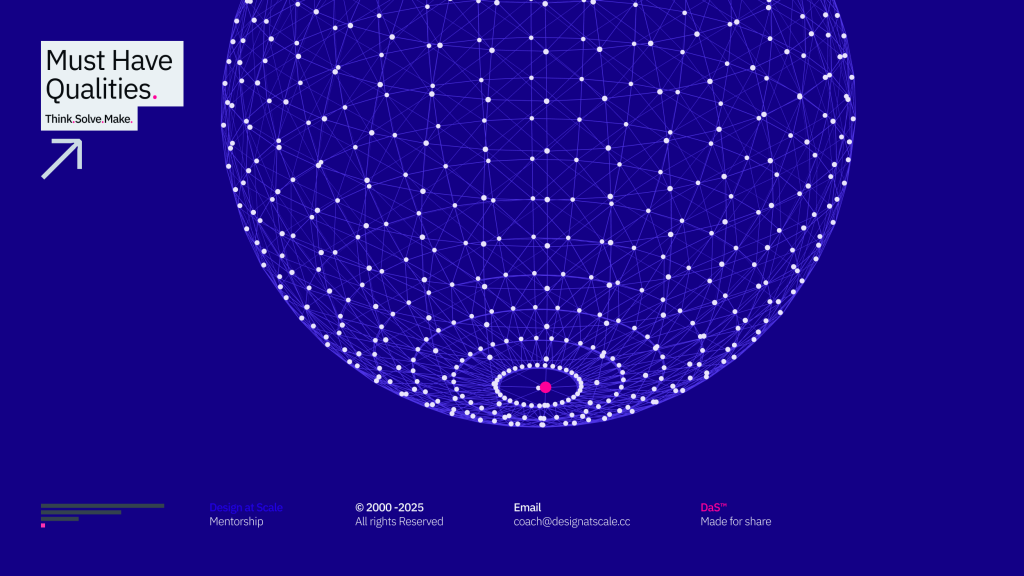
Must-Have Qualities:
Curiosity
A truly effective mentor isn't just a dispenser of wisdom. They are genuinely interested in your perspective, your challenges, and even what you can teach them. This fosters a two-way street of learning. They mostly act as a “the navigator” Observe – Ask – Plan – Act – (Measure)
Empathy
They can put themselves in your shoes, understand your struggles, and actively listen without judgment. This creates a safe space for vulnerability and honest dialogue.
Willingness to Share
Instead of prescriptive instructions, they share their own journey (or the journey of others), including failures and lessons learned in the context of your situation. This allows both of you to connect and derive your own insights. It also allows them to craft the plan for you.
Commitment to Your Growth
A good mentor pushes you beyond your comfort zone and challenges your assumptions. They believe in your potential and are dedicated to seeing you develop. If your mentor does not have a plan and you do not commit, it’s a waste of time for both.
Should-Have Qualities:
Perspective Beyond Design
While design-specific advice is valuable, mentors who can offer insights from other disciplines (e.g., product management, engineering, sales, customer support) will broaden your understanding of the entire product ecosystem. The only thing to be mindful of here is to understand that this is your path and all attributes on it define who you’ll become.
Openness to Different Approaches
They don't insist on their way being the only way. Embodiment of experimentation is a sign of a mature Mentor, and having something quite bespoke is always great. Do not forget that a bespoke solution is rather individualistic and might not fit with a wider world. Finding a solution that aligns with your unique style and the specific problem at hand is a must.
Humility
They acknowledge their own limitations and are open to learning from others, even those less experienced. This sets a powerful example.
Could-Have Qualities:
Strong Network
A mentor with a diverse network can connect you with other valuable individuals and opportunities, which often follow a successful mentorship and pass you on to someone with a profoundly different area of expertise.
Experience in a Specific Niche
While not essential for all mentorships, someone with deep expertise in a particular area you want to explore can provide targeted guidance. Mentoring Figma, mentoring prompt design, or mentoring CV might not be the best start to throw your money at. Think about the big picture
"If one does not know to which port one is sailing, no wind is favorable"
– Young Seneca
In other words, without a clear goal or direction in life, any opportunity or circumstance, regardless of how positive it may seem, will not be helpful in achieving what you truly want.
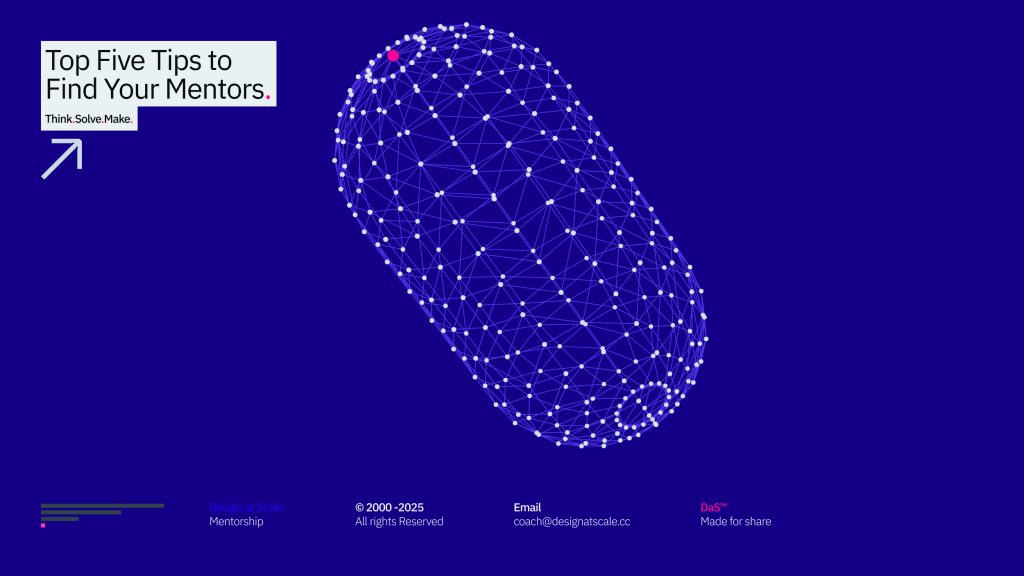
Top Five Tips to Find Your Mentors:
Forget the singular pursuit; embrace the power of a collective.
Look Beyond Your Department (The "Building Bridges" Method): Your most impactful "mentors" might not even be designers. Seek out individuals in sales, engineering, product, marketing, or customer support. Shadow them, ask about their challenges, and gain insight into their perspective on the user and the business. This expands your understanding of the entire product lifecycle and your role within it.
Focus on Specific Learning Opportunities, Not Just a "Mentor" Title:
This might seem obvious, yet very few people miss it. Instead of "finding a mentor," identify specific skills or knowledge gaps you want to address. Then, seek out individuals who excel in those areas. This could be someone who's a master at negotiation, user research, or an expert in a particular aspect of decoding the design landscape, for you to have a solid understanding of what game you are in.
Proactively Seek Out Interactions and Be Prepared to Listen:
Don't wait for a formal mentorship program. Have a plan of questions and reach out to colleagues whose work you admire for a coffee, lunch, or a quick chat. Come prepared with thoughtful questions, but more importantly, be ready to listen truly. The goal is to absorb their insights and understand their unique perspective. (Reference: Never eat alone)
Embrace Discomfort and Naiveté:
It's natural to feel uncomfortable asking "naive" questions when stepping outside your immediate design circle. Push through this. The insights gained from asking fundamental questions to individuals in different roles can be invaluable and illuminate blind spots you may not even be aware of. And what you might know, your question might spark an interest, and that's how mentors are born.
Play the Long Game: Cultivate Relationships Consistently
Meaningful mentorship—or rather, a network of valuable advisors—doesn't happen overnight. It requires consistent effort and a willingness to invest in relationships over the long term. Follow up, offer help where you can, and show genuine interest in their work. These complex interactions will profoundly shape your thinking and problem-solving abilities.
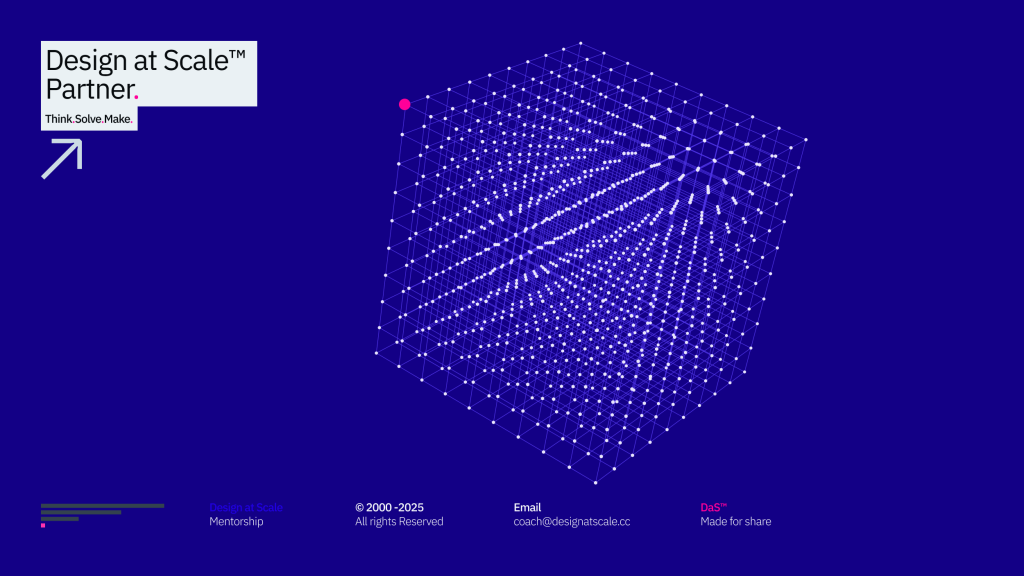
Design at Scale™ Partner
Here at Design at Scale™, we believe that your career growth isn't reliant on a single, elusive figure. It's the cumulative wisdom gleaned from every interaction, every curious question, and every relationship you intentionally build. Start today and discover the true secret to enduring design success: the collective intelligence of your expanded network, which empowers individuals and scales design careers or propositions.





